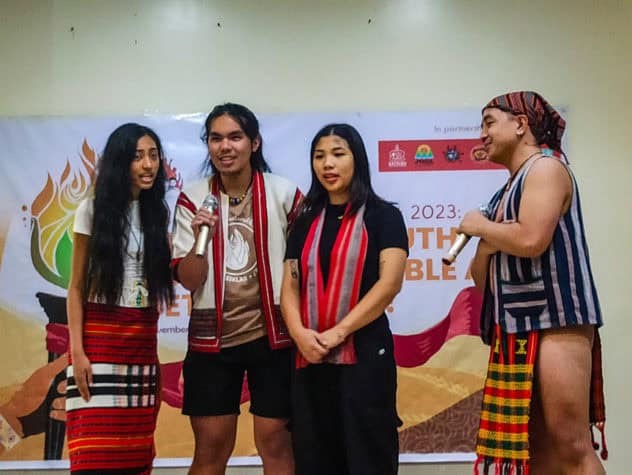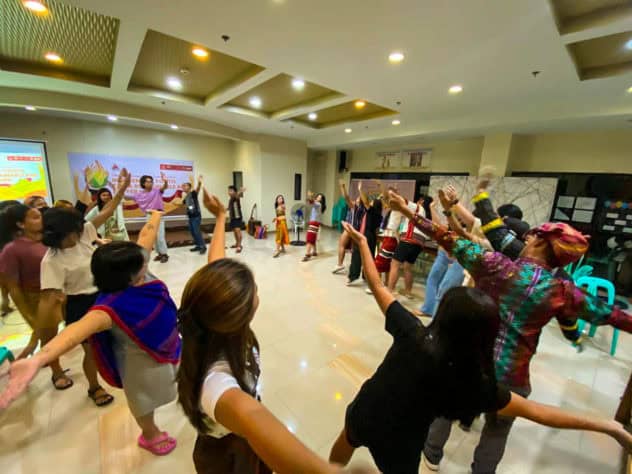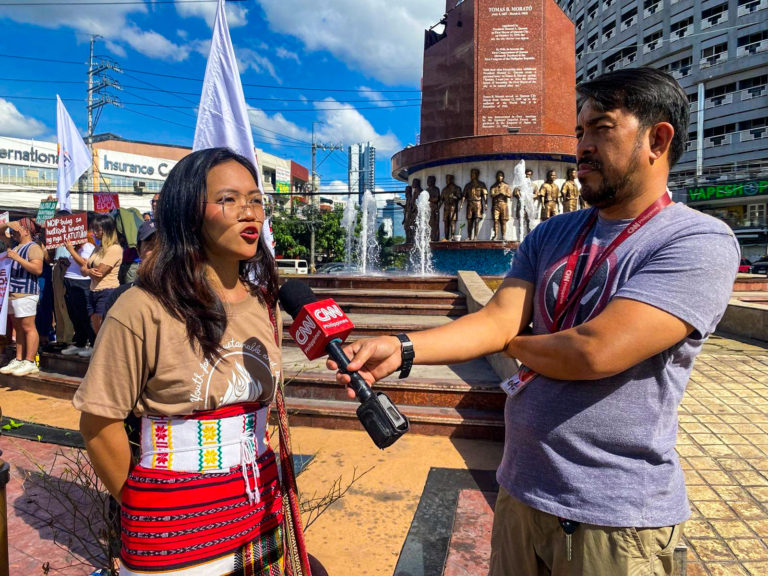I ride the bus home, and I always see red and green lights, lines and lines of exhausted people, and gray smoke. I think to myself, This is life in the city.
As an Igorot youth who grew up in the metro, fifteen hours away from my community, it is difficult to find my grounding in our culture and collective identity.
I am fortunate to have parents who told me bedtime stories of our legends and folklore and who always reminded me of our ancestors and our Indigenous roots.
Now that I am the National Coordinator of the Siklab Philippines Indigenous Youth Network (an organization of Indigenous youth in my country), which we successfully revived last year, I am able to find my roots in my land and my people.
The revival of the network was possible because of the unyielding support and patience of the Pawanka Fund and the International Indigenous Peoples Movement for Self-Determination and Liberation (IPMSDL).
Through dialogues with the elders and leaders in the Cordillera, they shared their wisdom, knowledge, and guidance in support of the youth as torchbearers of their bravery and the legacy of our ancestors.

As I visited different Indigenous communities and consulted with the Indigenous youth from the north, southern Luzon, and Mindanao, I gained inspiration to further continue the defense of our lands and right to self-determination.
The Indigenous communities that I have visited do not encounter crowds like in the city, with no red and green lights and no gray air emitted from cars. Instead, their experiences are marked by trucks carrying cement, minerals, and trees from their mountains, their rivers being stolen, military men with guns and bombs, and people dressed in formal clothes manipulating them and ordering them to leave.
During our activities, I am stripped of my individualistic tendencies one by one. I always get reminded of our roots and collective history, and it only gets deeper and deeper as I talk with other Indigenous youth.

My circumstances may differ from the others, living in the city and all, but from every conversation I share with the Indigenous Peoples, I know that the fight they have in their communities is also mine. And the struggle that we have in my community is theirs.
With all the Indigenous wisdom that guides me along the way and the struggle that all of us, Indigenous youth, share, I know that I am not alone in fighting for a better future. Standing beside me are other Indigenous youth from different provinces and regions, elders and leaders, and our martyrs and heroes, our ancestors.
Only through collective struggle will we build a future that is rightfully ours. Our lives as Indigenous youth are a testament to the long history of struggle, strength, and bravery of our ancestors, who sacrificed their lives for us and future generations.
Kim Falyao is an Igorot Youth from Cordillera, Philippines. She is the National Coordinator of Siklab Philippine Indigenous Youth Network.
About the project: IPMSDL and Katribu Youth partnered in 2023 for the “Strengthening Indigenous Youth Movement as future torch bearers of Indigenous Knowledge and ways of life” project with support from Pawanka Fund. Under the Intercultural and Intergenerational dialogues on traditional knowledge and practices Project Cycle, this collaboration built and reinvigorated the Philippine indigenous youth movement, SIKLAB. Through intergenerational and intercultural dialogues with elders, leaders, awareness building in communities, schools and organizations, The project enliven the aspiration of SIKLAB and the IP youth movement, not only for the passing on of indigenous knowledge and development of future leaders but most importantly, to ensure the continuity of the IP movement to defend land, territories, and ways of life.







